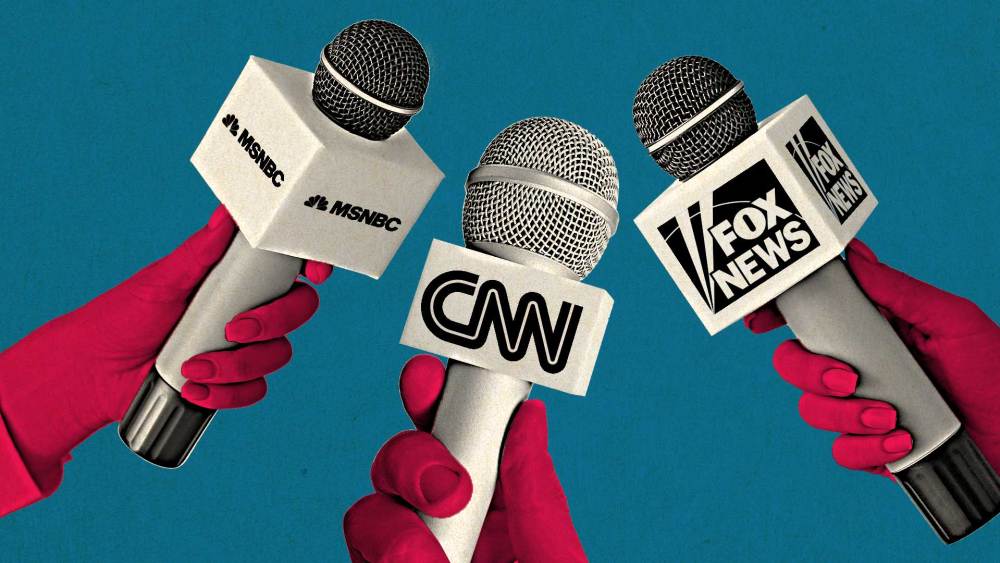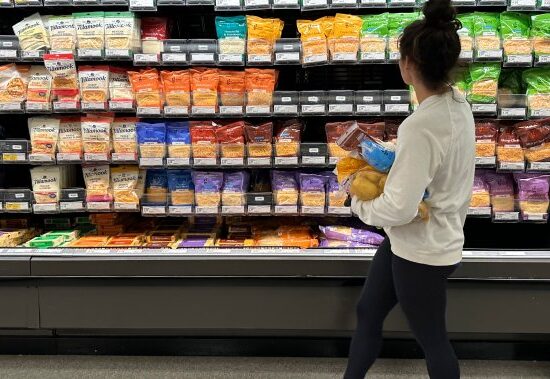
CNN on Wednesday broadcast one of the most controversial news events of the year, a runaway town hall interview with former President Donald Trump, and advertisers like Subaru and Fidelity Investments went along for the ride. There are new questions about whether all of Madison Avenue will do so in the future.
The nation’s big TV-news outlets are about to enter what should be a healthy cycle. The closer the U.S. gets to a presidential election, the more audiences tend to watch. CNN, for example, has indicated it expects to telecast more primetime town halls with candidates (last week’s lured nearly 3.31 million viewers), while Fox News Channel is expected to broadcast the Republican Party’s first primary debate in August.
These types of events usually snare big hauls of advertising. And yet, there are signs that advertisers are weary of the hassles their support of news programming will bring, with some media buyers predicting advertisers will opt to pull back on news spending, even as the race for the White House in 2024 heats up.
At issue, buyers say, is the continuing polarization of U.S. society, and the backlash advertisers can get when consumers perceive their desire to pitch products to news audiences as support for a conservative or liberal point of view. Marketers are also nervous about having their glitzy commercials placed adjacent to segments on war in Ukraine, a growing spate of mass shootings, climate change, and debates on cultural values. Advertisers “are afraid of the topics that the world has to cover,” says one media- buying executive. “They just don’t want to be next to that stuff.”
Fox Corporation has for the past two quarters noted a higher level of spending across the news sector by direct-response advertisers. These sponsors typically appear when a network can’t fill a commercial break with traditional ads. “It’s not so much a Fox News issue, but it’s something that that certainly has affected our ability” to gain leverage in pricing, said Fox Corp. CEO Lachlan Murdoch in a recent call with investors.
To be sure, there has long been trepidation around news content. TV networks have trained news producers and ad-sales personnel to pull ads out of rotation when news of an airline crash or terrorist attack surfaces. In the aftermath of the terrorist attacks of 9/11, many networks went commercial free for days, losing as much as $313.2 million, according to the estimates of one ad-tracking company.
Two decades later, news programming has only grown in importance to the nation’s big media companies. As more viewers migrate to streaming video, live news and sports are the only genres that routinely lure the large, simultaneous audiences that advertisers and cable distributors crave. Fox News Channel, for example, generates the bulk of operating profit of its parent company, Fox Corp., while CNN for some time was responsible for at least a quarter of the profits of the company once known as Time Warner, before it was merged with AT&T, and then Discovery Inc.
Advertisers can expect to hear more about news during this week of “upfront” presentations, when U.S. TV companies try to sell the bulk of their commercial inventory for their next programming cycle. Fox News, MSNBC and CNN have election-related events to sell, as do Paramount Global’s CBS, Disney’s ABC and NBCUniversal’s NBC News. Nexstar Media continues to support NewsNation, a nascent cable-news service that has recruited well-known anchors such as Chris Cuomo and Elizabeth Vargas.
But these companies may face difficulty in capturing ad support in months to come. CNN, for example, is projected to see 2023 ad revenue fall about 5%, to $562.6 million, according to Kagan, a market-research unit of S&P Global Intelligence. Ad revenue for Fox News Channel in 2023 is estimated to dip 8.2%, to $966.9 million, compared with more than $1.05 billion in 2022. Ad revenue is seen falling at Fox Business Network and CNBC as well, according to Kagan.
Only MSNBC is expected to see ad revenue rise in the months ahead. Kagan projects the NBCUniversal-backed outlet will see advertising rise nearly 12.5% in 2023, to $596 million, up from $529.8 million in the previous year. A Kagan spokesperson says the estimates are based in part on expectations of ratings delivery in the months ahead and cites recent downturns in Fox News primetime viewership since the departure of Tucker Carlson and similar audience issues at CNN.
Ad-sales executives at the networks are skeptical. Fox has already seen an early influx of political advertising, says Jeff Collins, executive vice president of advertising sales for Fox News Media. “We are seeing it earlier than we have ever seen before, and it Is certainly more aggressive at this point,” he says. “We see a large increase of spending coming this year.” CNN has recalibrated its programming in recent months, and viewers should start to see it as t viewers see the network as a “safe space for all voices.” says Jon Steinlauf, chief U.S. advertising sales officer at Warner Bros. Discovery. “It has always been the case that the news environment is not predictable,” he says, but “I think people are spending on news in anticipation of the presidential election.”
NBCUniversal declined to make an ad-sales executive available to speak about news programming.
Even though the news cycle continues to churn, advertisers feel one dynamic is likely to continue: For news shows to get the big ratings their parent companies need for success, they need to be confrontational. But that will only heighten some advertisers’ uneasiness with the genre.
As a result, perhaps, more of the news networks are finding ways to match advertisers with audiences without having to be placed next to segments that might turn controversial. “Yes, there are hard news stories that we have to deliver, but there’s also entertainment, lifestyle and sports,” says Adam Monaco executive vice president of sales at Disney. Advertisers can be aligned with travel, cooking and weather segments, “and that’s a client friendly environment.” CBS News has a wide range of “brand safe” segments that sponsors trust, says Joe Mina, a senior vice president at Paramount Global who oversees ad sales tied to news and late night, citing “On The Road With Steve Hartman” or “Kindness 101.”
There also appears to be a growing impetus to move away from formats that have created controversy. CNN’s newest Sunday program, “The Whole Story,” offers a documentary-style deep dive into a single topic, such as the plight of migrants crossing South America or solutions for climate change. MSNBC’s new weekend hour hosted by Jen Psaki, the former White House press secretary, favors long interviews over red-versus-blue debates (though the host still has partisan leanings). Fox News has also been spreading beyond its usual red-meat topics. Just a few weeks ago, the network put a spotlight on an expanding array of lifestyle content at a meeting with media buyers and advertisers. Meanwhile, Fox News has in recent months launched a series of roundtable programs — no one voice is dominant — in a move that aims to emulate the success of its most-watched show, “The Five.”
Do advertisers still need news to deliver big crowds, or just safe ones? At some point, the networks that deliver the headlines may not be able to do both.













